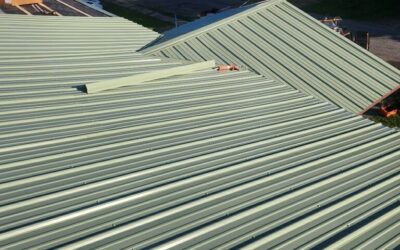🏠 Why Build a Hip Roof? The Smart Choice for Strength, Style, and Longevity
When it comes to roofing, your decision isn’t just about looks—it’s about durability, protection, and long-term value. One style that has stood the test of time in both residential and commercial architecture is the hip roof. Whether you’re building a new home or replacing an old roof, understanding why you should build a hip roof is critical to making the right investment.
In this comprehensive guide, we’ll explore what a hip roof is, how it compares to other roof types, and the many reasons homeowners and builders continue to choose it. From superior wind resistance to timeless curb appeal, the hip roof delivers on multiple levels.
🧱 What Is a Hip Roof?
A hip roof—sometimes called a hipped roof—has slopes on all four sides. These sides meet at the top to form a ridge. Unlike a gable roof, which has two sloping sides and two vertical walls (gable ends), a hip roof has no vertical ends. All sides slope downward toward the walls, usually at a gentle angle.
Hip roofs come in several styles:
- Simple hip roof – All sides slope downward to the walls.
- Pyramid hip roof – Four equal triangle-shaped sides meet at a single point (used on square structures).
- Cross-hipped roof – Two hip roofs are joined at right angles.
- Dutch hip roof – A combination of gable and hip for additional attic or upper floor space.
🌀 1. Superior Wind Resistance
One of the biggest structural advantages of a hip roof is its ability to withstand high winds. Because all four sides slope downwards, the wind can travel smoothly over the surface without creating the kind of lift that affects gable roofs. This is especially valuable in areas prone to hurricanes, tornadoes, or frequent windstorms.
In contrast, gable roofs can catch wind like a sail, putting more pressure on your home’s framing and increasing the risk of damage during extreme weather. The aerodynamic shape of a hip roof reduces wind uplift, which translates to better performance in harsh conditions.
This wind-resistance advantage can even lead to insurance benefits, as some providers offer reduced premiums for hip roofs due to their storm durability.
🌧️ 2. Excellent Drainage and Snow Shedding
Hip roofs are ideal in areas that receive heavy rain or snowfall. Their sloped design promotes water runoff, preventing pooling and reducing the risk of leaks or structural damage. The downward slope also makes it easier for snow to slide off the roof, minimizing weight buildup and preventing ice dams.
Flat or low-pitch roofs tend to retain water and snow, which can weaken the roof deck over time. A hip roof’s built-in angle naturally facilitates quick drainage, helping preserve the lifespan of both the roofing material and the underlying structure.
🏡 3. Aesthetic Appeal and Balanced Design
One of the more obvious benefits of hip roofs is their clean, symmetrical appearance. Their balanced lines add a touch of elegance and sophistication to nearly any home style—whether it’s a bungalow, ranch, colonial, or craftsman.
The symmetry of a hip roof also allows for creative architectural enhancements, such as:
- Dormers
- Skylights
- Roof windows
- Decorative ridge caps
Homebuyers are often drawn to the clean, cohesive look of hip roofs, which means homes with this type of roof can enjoy higher resale value and greater curb appeal.
🧰 4. Versatility in Roof Materials
Hip roofs are compatible with virtually all types of roofing materials, including:
- Asphalt shingles
- Clay or concrete tiles
- Wood shakes
- Slate
- Metal roofing panels
This makes them a great fit for both traditional and modern architectural styles. If you’re looking to invest in a premium roofing material that lasts for decades, the hip roof provides a sturdy base and complements various textures and colors.
Additionally, a hip roof’s structural strength makes it suitable for solar panels, which are becoming increasingly popular for energy-conscious homeowners.
🏗️ 5. Structural Stability and Load Distribution
Hip roofs are inherently more stable than gable roofs due to their inward slope and the way their load is distributed across all four walls. This makes them especially suitable for homes in areas with heavy snow loads or frequent storms.
The inward-facing design of the hip roof allows for better weight distribution, which helps minimize stress on framing members and reduces the likelihood of sagging or collapse over time. The roof’s structure also helps keep walls in place, making it a solid choice for both one-story and multi-story buildings.
🔇 6. Quiet and Energy Efficient
Compared to other roof types, hip roofs can be quieter, especially during rain or hailstorms. The extra framing and multiple sloping surfaces absorb more sound energy than flat or gable roofs.
In terms of energy efficiency, hip roofs often have eaves or overhangs on all sides, which help shade windows and reduce solar heat gain during summer months. This can lead to lower cooling costs and improved indoor comfort.
Pairing your hip roof with proper attic ventilation and reflective roofing materials can further enhance your home’s overall energy efficiency.
🔧 7. Attic Space & Ventilation Options
Although hip roofs generally provide less attic space than gable roofs, they can still be designed to include:
- Small attic storage areas
- Vaulted ceilings
- Functional ventilation systems
For homes that prioritize ventilation and insulation, a well-designed hip roof with ridge vents and soffit vents can allow proper airflow. This helps regulate attic temperature, prevents moisture buildup, and reduces the risk of mold and mildew.
🧱 8. Longevity and Reduced Maintenance
Hip roofs require less maintenance than other types of roofing because they’re less prone to wind and water damage. With fewer exposed edges and no vertical gable ends, there’s less surface area for leaks to develop.
Their ability to shed debris, snow, and water means you won’t have to clean or repair them as frequently. Over time, this can save you significant money on roof inspections, gutter cleanings, and emergency patchwork.
🔨 9. Ideal for Additions and Complex Designs
If you’re planning on expanding your home or creating a complex architectural design, a hip roof is a flexible option. Its structure supports the addition of intersecting rooflines (such as cross-hipped or L-shaped layouts), making it easier to blend old and new sections of the home without sacrificing structural integrity.
This is particularly useful for custom home builds, extensions, and remodeling projects where cohesive rooflines are essential.
🧮 10. Long-Term Value and ROI
Although hip roofs can be slightly more expensive to build upfront due to their more complex framing and additional materials, the long-term benefits usually outweigh the costs. The investment pays off in several ways:
- Increased home resale value
- Lower insurance premiums
- Reduced maintenance costs
- Energy savings
- Improved weather protection
If you plan to stay in your home long-term or want to build a high-performance property, a hip roof offers a smart return on investment.
🔍 Common Misconceptions About Hip Roofs
Let’s clear up a few myths.
“Hip roofs are too expensive.”
While it’s true that they require more framing and labor, the extra cost is usually justified by the improved durability and lower lifetime maintenance.
“They don’t allow much attic space.”
Modern home design allows for hip roof combinations that incorporate dormers and other elements for added space and storage.
“They’re harder to install solar panels on.”
Not at all. In fact, hip roofs can be ideal for solar if the orientation is right. Their multiple slopes provide flexibility in solar panel placement to maximize sun exposure.
🛠️ When Is a Hip Roof NOT the Best Option?
Despite all its strengths, there are a few situations where a hip roof might not be the best fit:
- Budget constraints – Hip roofs cost more than gable roofs due to complexity.
- Limited design flexibility – Gable roofs allow for taller attic spaces and vaulted ceilings.
- Small homes – On small square footage, the benefits of a hip roof may not outweigh the cost.
Always consult a licensed roofing contractor to evaluate your goals and get a detailed estimate.
👷 Should You Build a Hip Roof? Final Thoughts
If you’re looking for a durable, stylish, and weather-resistant roofing system, the hip roof is a top contender. Its four-sided slope provides enhanced strength, better drainage, and long-term protection—making it ideal for homes in a variety of climates.
Yes, it may involve a higher initial investment, but the payoff comes in the form of long-term performance, lower repair needs, and a sleek, modern look that never goes out of style.
📞 Ready to Upgrade Your Roof?
Thinking about installing a hip roof for your new home or during a roof replacement project? Make sure to choose an experienced contractor who understands hip roof construction and can guide you through material selection, ventilation, and cost-effective planning.
 (440) 307-2060
(440) 307-2060

